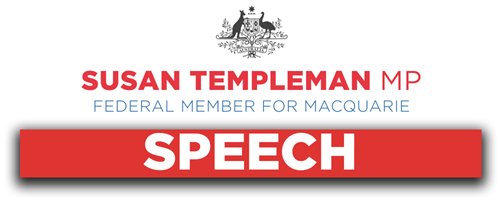
No-one believes that women and men started COVID on an equal economic footing. In January, pre-COVID, Australian women were still retiring with, on average, 47 per cent less super than men, and women over 55 were the fastest-growing group of homeless people. There were fears of a big impact, as the number of older Australian women grows. There was already a 13.9 per cent gender pay gap and—just to finish the picture—there had been no success in reducing the number of women killed by family violence or the number of women experiencing violence, despite 10 years and tens of millions of dollars in funding. On average, one woman a week was still being murdered by her current or former partner and one in three Australian women had experienced violence since the age of 15.
Along comes COVID. In its research, AMP notes that many of the industries that have been hardest hit by the pandemic are the ones that are found in the Blue Mountains and Hawkesbury, the regions that make up my electorate of Macquarie. These are so-called family-friendly flexible jobs, traditionally filled by women—that is, retail, hospitality, events and food service businesses. The businesses that run these jobs were forced to stand staff down or cut their hours, or they asked staff to take unpaid leave.
The research shows that women have suffered the biggest pay cuts in 11 of the 189 sectors of the economy and job losses across 14 of 19 sectors. In spite of this issue being discussed in parliament the last time we were here, the only decision we have seen so far is a future cut to JobKeeper and JobSeeker, the very things keeping a lot of women still employed or supported while they look for work. There are childcare workers who were on JobKeeper and then off it, their industry treated as a plaything with no-one being consulted, neither directors of the centres, who are predominantly women, nor the workers, who are also predominantly women. We've seen nurses and midwives and aged-care workers, making up 80 per cent of the sectors in which they work, carrying a huge burden with little or no economic gain.
The latest Bureau of Statistics figures released earlier this month show the urgency for action, with the gender pay gap continuing to stagnate under the Morrison government. They show the gaps have increased to 14 per cent, with women earning $263.60 a week less than men. That's an increase of $10.70 a week since the November data. Between February and July, female workforce participation also dropped by 1.5 per cent. Consider how all this will affect women's futures—that is, their superannuation. Women in Super states that women currently retire with 47 per cent less super than men, but they live five years longer on average. Women only get one-third of the government tax concessions on super, so it is unsurprising, but very disturbing, that 40 per cent of older single retired women live in poverty and experience economic insecurity.
When the Morrison government announced people could access up to $20,000 of their super as a response to the COVID crisis, the cost was always going to be greater for women. Part of it is the fact that they'll forgo future earnings on the balances taken out of their already lower super. The estimate is that if a 50-year-old woman took out $20,000 from a super account with $109,000 in it, she'd be more than $41,000 worse off at retirement. A 25-year-old woman who did the same would be more than $120,000 worse off.
And then there are women who have been pressured to access their super early by c


